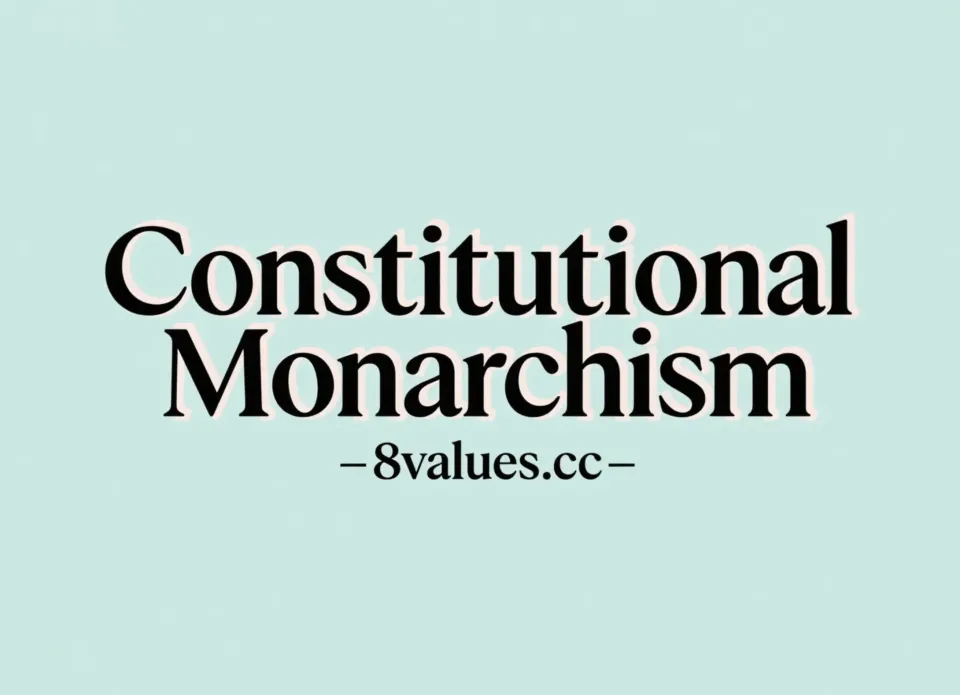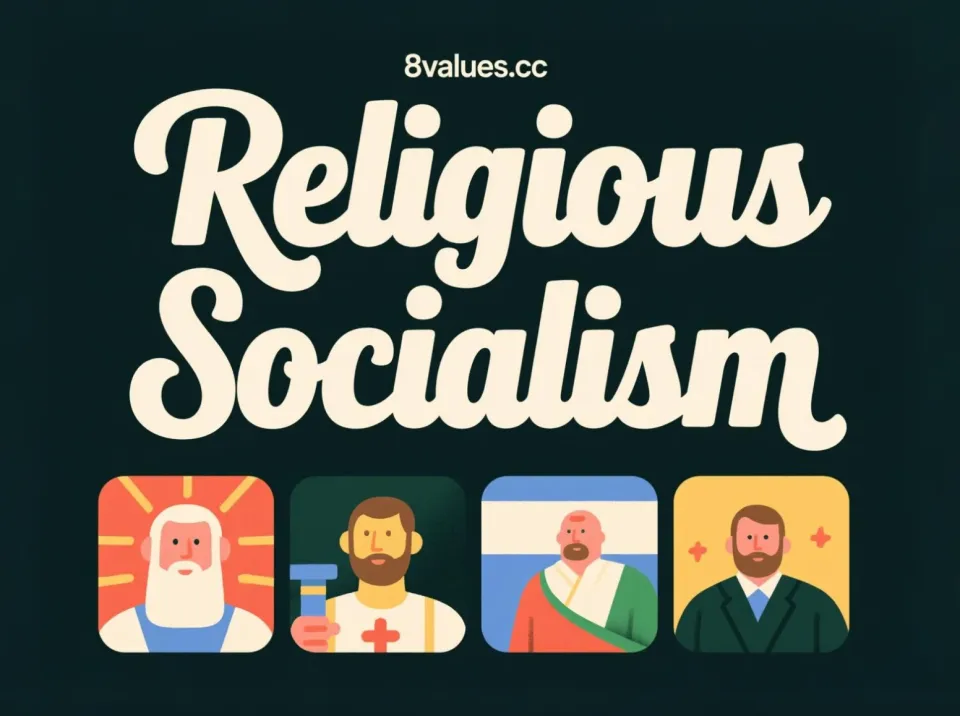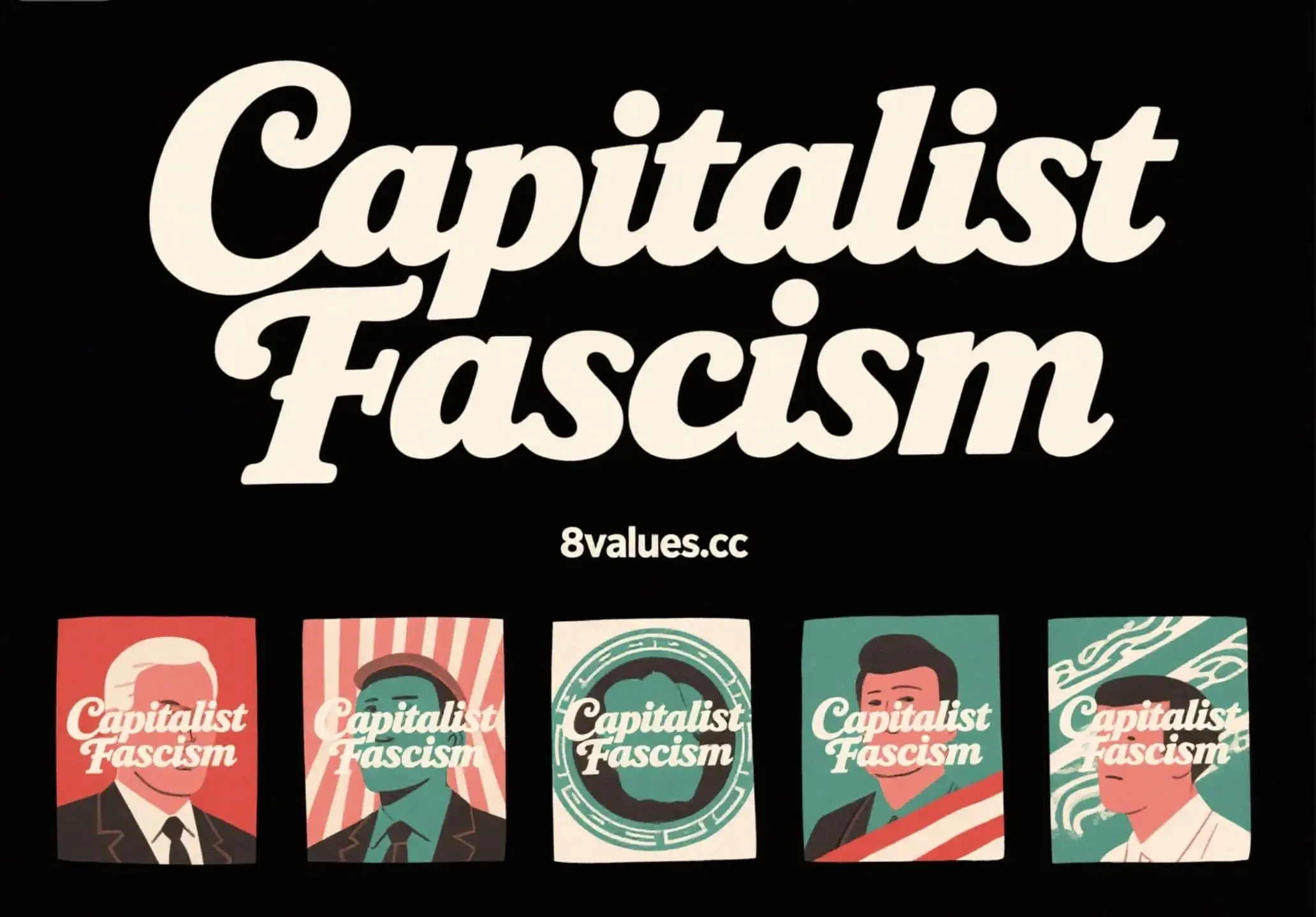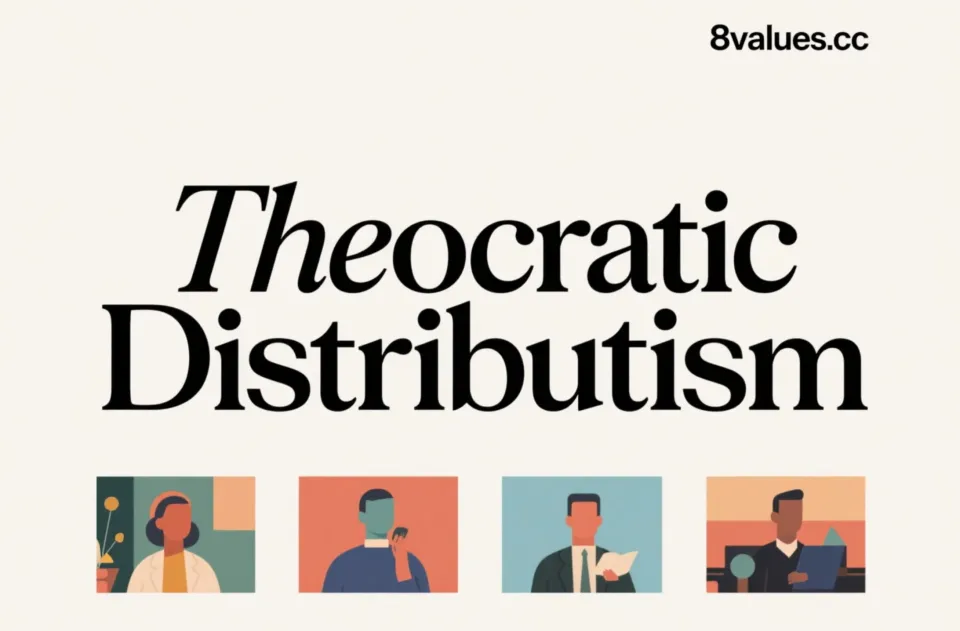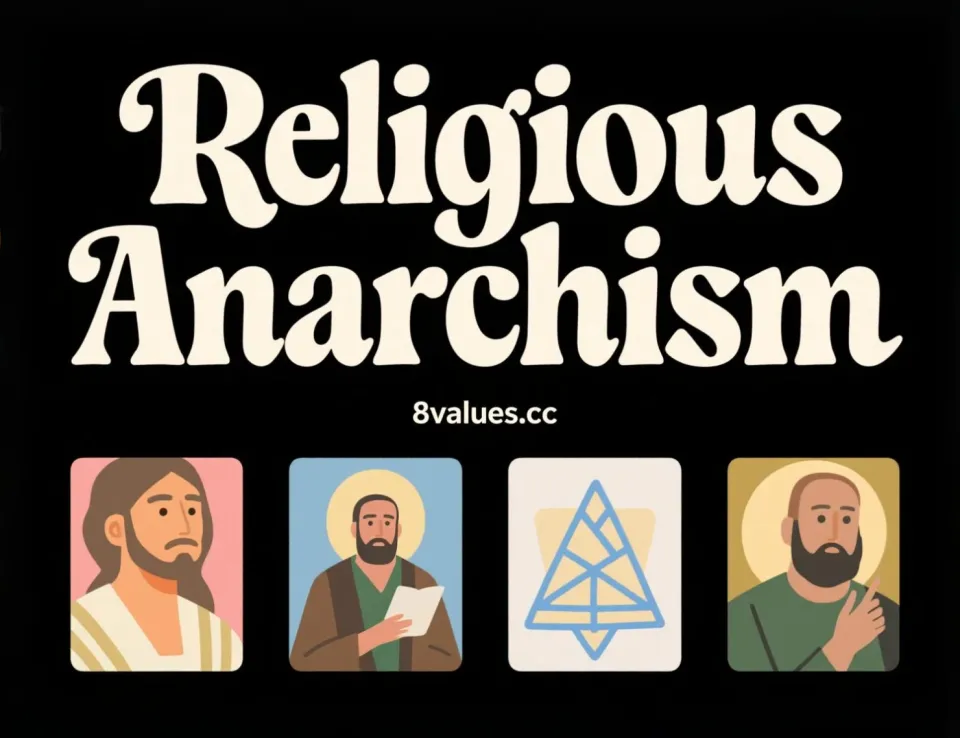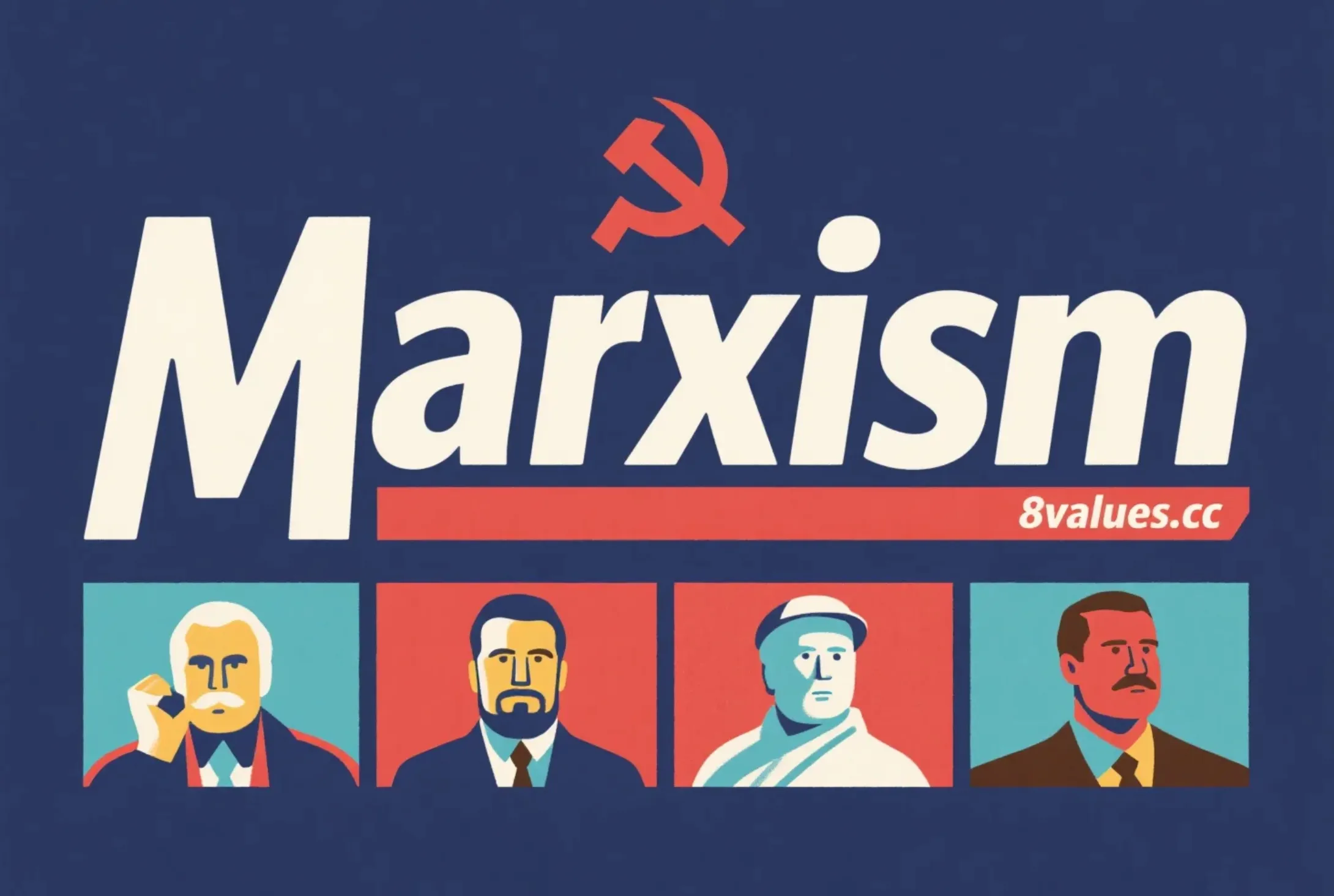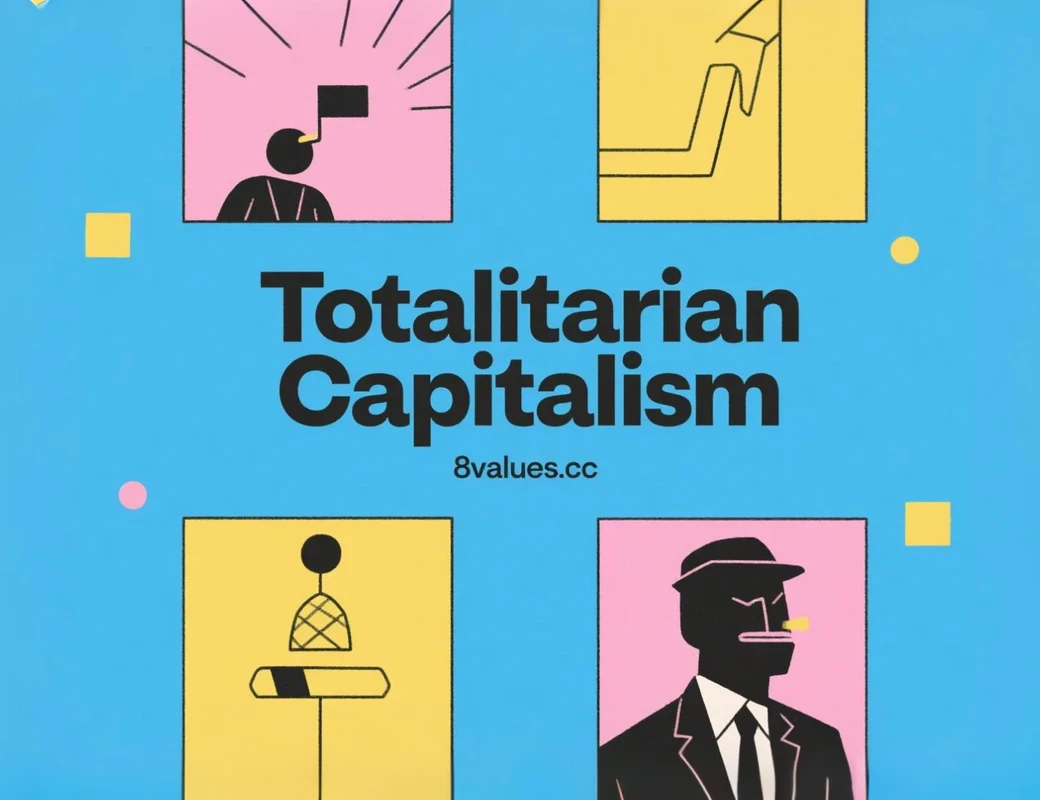Constitutional Monarchism: The coexistence of monarchy and democracy within the constitutional framework
Constitutional monarchy is a political system that retains the monarch but strictly limits its power through the constitution. It aims to establish popular sovereignty and realize republican ideals. It is one of the important concepts in the test of ideological tendencies of modern political values.
Constitutional Monarchism is a political system that combines the principles of monarchy and constitutional democracy. In this system, the head of state is a hereditary monarch, but his authority and functions are strictly constrained by a constitutional or legal framework. Constitutional monarchy is a national system that is opposed to absolute monarchy (Absolute Monarchy) , which means that the monarch has all political and legislative powers without challenge or restriction.
In today's world, constitutional monarchy is still a very popular form of government, accounting for approximately 17% to 22% of the total number of countries in the world. These countries include many of the richest and most democratic countries in the world, such as Norway, Sweden, Canada, and the Netherlands.
If you are interested in constitutional monarchy and other popular ideological tendencies, you can learn more by visiting the 8Values political ideology test official website and take the political values ideological tendency test .
The core definition and political status of Constitutional Monarchy
A constitutional monarchy is also often called a Limited Monarchy, a Parliamentary Monarchy or a Democratic Monarchy. Its core is to establish people's sovereignty and limit the power of the monarch through constitution while retaining the monarchy.
Distribution of power and symbolic status
In a constitutional monarchy, political power is typically shared between the monarch and constitutionally mandated government institutions, such as parliament.
- The role of the monarch: The monarch (emperor, king, queen, prince, grand duke, etc.) serves as the head of state, usually for life and mostly hereditary. They are quintessential symbols of national identity, tradition, pride and customs. In modern times, the monarch has primarily ceremonial duties and serves as a visible symbol of national unity.
- De facto ruler: Actual governing power is exercised by an elected parliament or similar legislative body, headed by a prime minister or chancellor. As political scientist Vernon Bogdanor said, the monarch under a constitutional monarchy is "a sovereign who reigns but does not rule."
In most parliamentary constitutional monarchies, the monarch's political power is extremely limited and his duties are mostly ceremonial. While the government may legally operate in the name of the monarch (for example, His Majesty's Government in the UK), the Prime Minister is the actual manager of the country.
The historical origins and evolution of Constitutional Monarchism
The emergence of constitutional monarchy is the result of the continuous game between the increasing power of civilian elites and the power of the monarch in historical development.
Early Origins and British Examples
The world's earliest system with the characteristics of a constitutional monarch can be traced back to the ancient Hittites. Their king had to share power with an assembly of nobles, the Panku, which is equivalent to a modern parliament or legislative body.
However, the legal foundation of modern constitutional monarchy was laid in the United Kingdom:
- Magna Carta : As early as 1215, the nobles of England forced King John to sign the Magna Carta. This document limited the royal power, especially the power to tax, and guaranteed the property and rights of the nobles and the church. This is considered the earliest origin of constitutional monarchy and the beginning of the British constitution.
- Glorious Revolution : The Glorious Revolution of 1688 further promoted the constitutional monarchy. Subsequently, the British Parliament passed the Bill of Rights in 1689. The bill established the basic principles of parliamentary supremacy, judicial independence, and inviolability of the rights of subjects, transferred actual power to the hands of parliament, and laid the legal foundation for a modern constitutional monarchy.
Since then, the British monarch has gradually been in the position of "ruling without governing". Queen Elizabeth II is considered the last British monarch to intervene politically during her reign.
Promotion in continental Europe
In the 18th and 19th centuries, a series of revolutionary movements such as the French Revolution directly overthrew or severely shaken the absolute monarchies of many European countries. In order to avoid the outbreak of more radical revolutions, European monarchs began to compromise with the bourgeoisie and gradually implemented constitutions, allowing the establishment of parliaments and opening limited free elections. Poland promulgated its monarchical constitution in 1791, the second single-document constitution in the world. By the early 20th century, all remaining monarchs in Europe, with the exception of the Pope, were constitutional monarchs.
Asian Practice
In Asia, Japan established a constitutional monarchy in the 19th century through the Meiji Restoration and the Meiji Constitution of 1889, but its constitutional democracy was limited until World War II. After the war, according to the Constitution of Japan, the emperor was strictly limited to being a symbol of the country and no longer had real political power. Thailand began its transition to a constitutional monarchy after the Siamese Constitutional Revolution in 1932.
Classification of Constitutional Monarchy: Dualism and Parliament
According to the degree to which the monarch's power is restricted, constitutional monarchies are widely divided by scholars into two main types: parliamentary constitutional monarchy and dualist constitutional monarchy.
1. Parliamentary Constitutional Monarchy
Parliamentary constitutional monarchy is the main form of modern constitutional monarchy. Its characteristic is that the monarch only retains symbolic ceremonial functions and is a virtual head of state without actual political power.
In this system, parliament is supreme, and the cabinet is elected by the majority party or coalition of parties in the parliament and is accountable to the parliament. Although the monarch formally has the power to appoint the prime minister, dissolve parliament, or approve laws (Royal Assent), in practice, these powers are almost entirely formal and must be exercised in accordance with the recommendations of the prime minister and cabinet.
Typical countries: Britain, Canada, Sweden, Norway, Denmark, Netherlands, Belgium, Spain, Japan, Australia and New Zealand, etc. In Sweden and Japan, for example, the constitutions have been changed so that the monarch is no longer the titular head of the executive.
2. Dual Constitutional Monarchy
A dual constitutional monarchy (sometimes called a semi-constitutional monarchy) is a form of constitutional monarchy in which the monarch retains considerable actual power.
In this system, the monarch's power is greater than that of Parliament, and various major decrees require the monarch's signature. The monarch can appoint the prime minister, dissolve parliament, take over military, political and diplomatic powers, and even have final decision-making power in areas such as national defense and foreign affairs. This type of government is more common in late-modernizing countries and is more authoritarian than the parliamentary system.
Typical countries: Jordan, Morocco, Kuwait, Bahrain, Bhutan and Tonga. Liechtenstein and Monaco are representatives of European constitutional monarchies whose monarchs have greater real power. Thailand's monarch still retains high authority and actual influence under the constraints of the constitution, and is often regarded as the most influential representative of the monarch in the dual system structure.
Political functions and crisis insurance of Constitutional Monarchism
Although monarchs appear to have no real power in parliamentary constitutional monarchies, they still play important political functions, which helps explain why this system can survive and even thrive in the era of republics.
Political rights and non-political roles
British political theorist Walter Bagehot identified three main political rights that the constitutional monarch can freely exercise in the British Constitution: the right to be consulted , the right to encourage , and the right to warn . The exercise of these powers usually takes place behind the scenes, with the monarch meeting weekly with the prime minister to be briefed and provide input.
The monarch's role as head of state is described as:
- National Integration and Traditional Maintenance: The monarch is a non-partisan symbol that contributes to national unity and political stability. They serve as points of coordination in a pluralistic society by preserving historical traditions and cultural identities.
- Reduce political risk: The monarchy can serve as a "political risk reduction mechanism", especially to appease conservatives and protect their core interests (such as religious and property rights), thus avoiding political chaos caused by "rational fear".
- Crisis Insurance: In times of true constitutional crisis, a constitutional monarch can act as a “fire hydrant”, providing a focal point to resolve political deadlock. For example, Spain's King Juan Carlos helped stabilize democracy in Spain during a 1981 coup by publicly ordering the army to return to its barracks.
Royal prerogative and potential constitutional crisis
In many parliamentary constitutional monarchies, the monarch or his representative (such as the Governor-General) still has significant "Reserve Powers" or "Royal Prerogatives". These powers are used on rare occasions, mainly to safeguard parliamentary government in times of extreme emergencies or constitutional crises.
However, it is dangerous for the monarch to exercise discretionary power. Once it is seen as intervening in partisan politics, it may cause controversy and even lead to the reduction of power in the system. For example, in Australia's 1975 constitutional crisis, the Governor-General removed the Prime Minister from office without his consent. In the Netherlands, the Queen's intervention in government formation in 2010 prompted the Netherlands to change the way in which future cabinet-formers are appointed.
To better understand the workings and distribution of power in different political systems, including constitutional monarchies and their various forms, you can try taking the 9Axes Political Ideology Test , which will help you analyze the political spectrum along multiple dimensions.
The value and challenges of modern constitutional monarchy
While retaining its historical heritage, the modern constitutional monarchy also faces challenges from democratic principles.
Advantages reflected
Supporters of the monarchy point to multiple advantages for the institution's continued existence:
- Political neutrality: The presence of the monarch provides a non-political national symbol that can theoretically be independent of partisan politics and act as a mediator in turbulent times.
- Fighting Populism: There is a view that the existence of the monarch puts a ceiling on the power of elected political leaders, because the role of "symbol of the nation" is already occupied by the monarch, which helps to mitigate the most destructive forms of populism.
- International soft power: Royal members provide moral leadership internally and exert soft power externally through philanthropy and international diplomatic activities.
Limitations and Controversies
The constitutional monarchy is not without its shortcomings. The main doubts focus on:
- Democratic Legitimacy: Some argue that retaining an unelected hereditary head of state (even a symbolic one) in a modern democracy is inconsistent with fully democratic principles.
- Fiscal costs: Maintaining the wealth and status of the royal family requires high public expenditures, which may become a burden on the people.
Ideology Testing and Political Spectrum Exploration
As a unique political system, constitutional monarchy reflects a complex fusion of traditional and modern democratic principles. It also shows different ideological tendencies in practice in different countries. For example, constitutional monarchies that emphasize parliamentary sovereignty (such as the Nordic countries) usually tend to be left-liberal, while those countries where the monarch retains greater real power (such as some dualist constitutional monarchies) may have a more conservative or authoritarian tone.
If you want to learn more about where you stand on the political spectrum, whether you lean toward Libertarianism or Authoritarianism, or are interested in the LeftValues test and the RightValues test , you can explore it through our platform.
Through the 8Values political orientation test , you can comprehensively assess your position on different value dimensions to better understand your relationship with various political ideologies such as constitutional monarchy.
